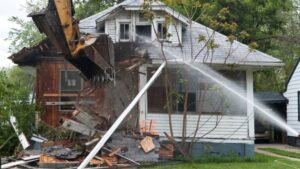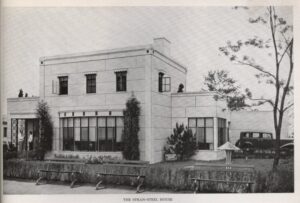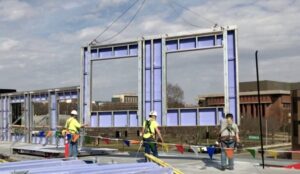The building method for wood-framed homes in the United States has changed little since the mid-1800s. Due to current construction methods, maintenance is often required after only a few decades for wood-framed homes.
Today, new building methods and durable framing materials, including cold-formed steel (CFS) framing, are available to extend the life of a structure.
The “Flimsy” History of Wood Framing
In 1832, George Washington Snow needed to quickly build a Chicago warehouse. To meet his need for speed, balloon framing using vertical 2-by-4 planks as exterior walls was born, replacing timber-framed construction.
By the 1930s, the fire risks associated with balloon framing had become apparent, so platform framing took over as the preferred wood-framing method, according to The Craftsman Blog.
Balloon and platform framing improved the speed of construction, but they also had drawback: the need for significant maintenance and repairs.
- Maintenance is essential for wood-framed homes
- Maintenance must be done on wood-framed homes within about 30 years
- This is Why So Many American Homes Are Flimsy, says Cheddar News

Wood-framed homes lose their value and are often torn down for new construction
“Flimsy home construction isn’t just limited to the United States,” says Lawrence Banton in the Cheddar News. “Japan faces similar problems [because] the lifespan of homes over there are even shorter than in America, with many losing their value after about 20 years and often getting completely torn down after 30 years.”
The Steel Advantage
The use of CFS framing as a construction material also dates back to the 1800s, although the shapes and dimensions of CFS used are unlike the typical framing members seen today.
The current form of CFS framing members appeared in the early 20th Century, which resembled the wood studs common in construction.
The first documented use of CFS as a building material was in 1925 — the Virginia Baptist Hospital in Lynchburg, Virginia, says the Steel Framing Industry Association (SFIA).

The CFS framed Stran-Steel House made its debut at the 1933 Chicago World’s Fair.
CFS use as a residential construction material made its debut at the 1933 Chicago World’s Fair, A Century of Progress. Here, the “home of the future” exhibit featured three homes that made extensive use of CFS framing. These included the General Houses home, the Armco-Ferro House and the Stran-Steel House sponsored by Good Housekeeping.
Today, building professionals are building smarter by using CFS to build structures that are more durable, easier to construct and last longer than wood-framed structures. CFS framing has a proven track record of providing sustainable and economical benefits.

A growing number of building professionals are using prefabrication techniques to work smarter, faster and safer with cold-formed steel framing.
CFS framing is:
- Dimensionally stable and does not expand or contract with changes in moisture content
- Lightweight compared to wood and concrete
- Will not warp, split, crack or creep when exposed to the elements
- Sustainable and 100% recyclable
- Durabile and has a high tensile strength
- Non-combustible and is a safeguard against fire accident
Article cited from BuildSteel.org – Read entire article here
